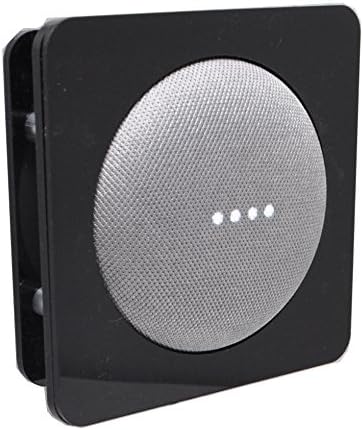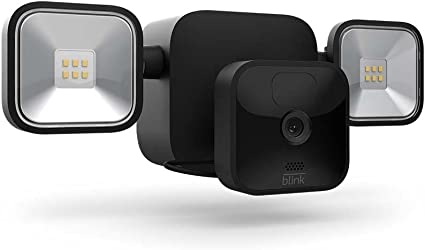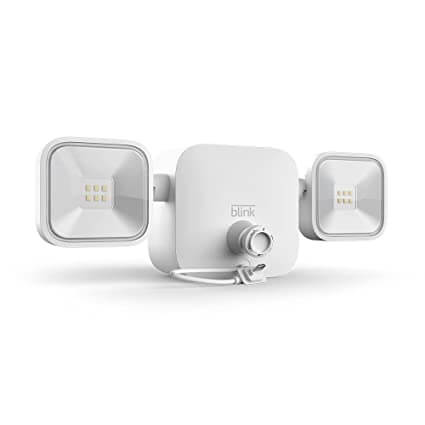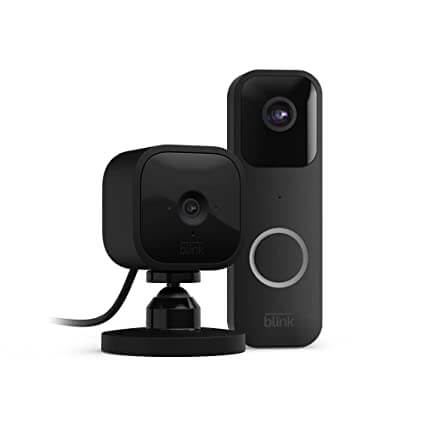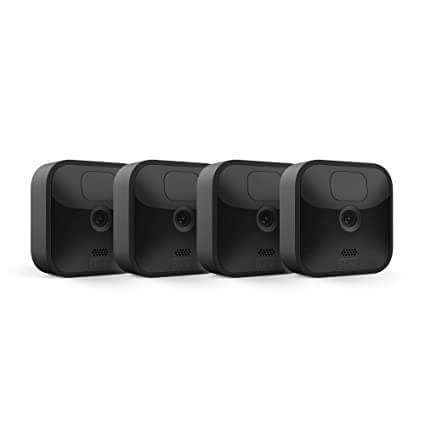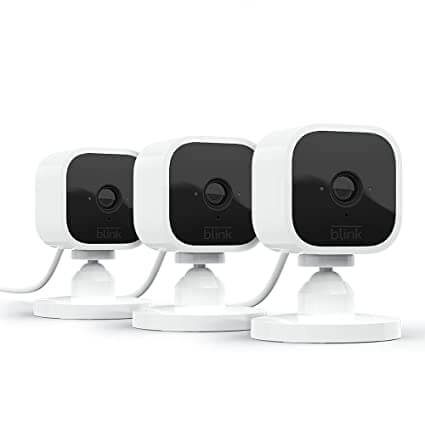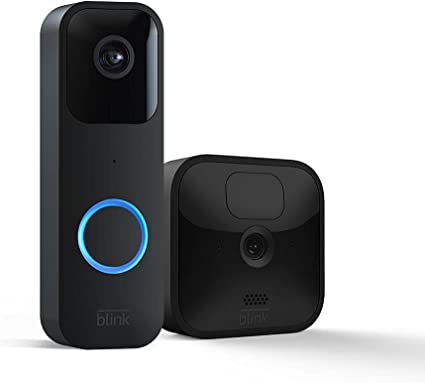Overview of Blink Camera Systems
Blink camera systems have revolutionized home security with their advanced features and ease of use. In this article, we will provide an in-depth overview of Blink camera systems, highlighting their key benefits, functionalities, and personal experiences. Whether you’re a homeowner looking to enhance your security or a tech enthusiast exploring smart home solutions, understanding the capabilities of Blink camera systems is essential.
What Are Blink Camera Systems?
Blink camera systems are wireless, battery-powered security cameras designed for easy installation and monitoring. They offer a range of features that ensure reliable surveillance and peace of mind. With Blink cameras, you can keep an eye on your property, receive motion alerts, and even interact with visitors remotely through two-way audio.
Key Features of Blink Camera Systems
- Wireless Connectivity: Blink cameras connect to your home network via Wi-Fi, eliminating the need for messy cables and simplifying installation.
- Battery-Powered: Blink cameras run on long-lasting batteries, providing flexibility in camera placement and eliminating the hassle of frequent battery replacements.
- Motion Detection: These cameras employ advanced motion detection technology to alert you whenever motion is detected within the camera’s field of view.
- HD Video Recording: Blink cameras capture high-definition video footage, ensuring clear and detailed images for effective monitoring and playback.
- Cloud Storage: Recorded video clips are securely stored in the cloud, allowing you to access and review footage from anywhere using the Blink mobile app.
- Mobile App Control: The Blink mobile app provides convenient control over your camera system, enabling you to view live video feeds, customize settings, and receive motion alerts on your smartphone or tablet.
Personal Experience with Blink Camera Systems
As a proud user of Blink camera systems for several years, I can attest to their exceptional performance and reliability. The ease of installation and the flexibility of wireless connectivity have been significant advantages for me. The battery life has exceeded my expectations, providing long-lasting power without the need for frequent replacements.
The motion detection feature has proven invaluable in alerting me to any activity around my property, giving me peace of mind even when I’m away. The HD video quality ensures that I can clearly see any details or incidents captured by the cameras. Additionally, the Blink mobile app has been user-friendly and intuitive, allowing me to easily access live feeds, review footage, and adjust settings on the go.
Introduction to Google Home: Your Guide to a Smarter Home
Welcome to the world of Google Home, the revolutionary smart speaker that brings the power of Google Assistant into your living space. In this article, we will provide a comprehensive introduction to Google Home, highlighting its features, capabilities, and personal experiences. Whether you’re a tech enthusiast or someone looking to make your home smarter, Google Home is here to transform the way you live.
What is Google Home?
Google Home is a smart speaker powered by Google Assistant, a virtual assistant that can answer questions, perform tasks, and control various smart devices in your home. It’s designed to be your go-to companion for daily activities, entertainment, and managing your connected ecosystem.
Key Features of Google Home
- Voice-Activated Assistant: With Google Home, you can simply use your voice to ask questions, set reminders, play music, and control compatible smart devices.
- Smart Home Control: Connect Google Home to your smart home devices, such as lights, thermostats, and security systems, and control them effortlessly with voice commands.
- Information and Search: Get instant answers to questions, weather updates, traffic information, and the latest news just by asking Google Assistant.
- Entertainment Hub: Stream music from popular services like Spotify and YouTube Music, listen to podcasts, and enjoy hands-free control of your favorite media content.
- Productivity and Organization: Set reminders, create shopping lists, schedule appointments, and manage your calendar seamlessly using voice commands.
- Multi-room Audio: Sync multiple Google Home devices together to enjoy synchronized audio throughout your home for a truly immersive experience.
Personal Experience with Google Home
As an avid user of Google Home for the past few years, I can confidently say that it has greatly enhanced my daily life. The convenience of using voice commands to control my smart home devices, play music, and access information is unparalleled. Google Assistant’s ability to understand natural language and provide accurate responses has impressed me time and time again.
One of the standout features of Google Home is its compatibility with a wide range of smart devices. I can effortlessly control my lights, thermostat, and even security cameras with simple voice commands. The entertainment capabilities are also exceptional, as I can easily stream my favorite music and podcasts, all hands-free.
Integration between Blink and Google Home: Enhancing Your Smart Home Experience
Are you looking to integrate your Blink security camera system with your Google Home setup? Look no further! In this article, we’ll explore the seamless integration between Blink and Google Home, and how it can enhance your smart home experience. From voice-controlled camera access to home security automation, we’ll cover it all. Get ready to take your smart home to the next level with this powerful integration.
What is Blink?
Blink is a popular brand of home security cameras that offers wireless, battery-powered solutions for monitoring your home. With its easy setup and motion-activated recording, Blink provides peace of mind by keeping a watchful eye on your property both indoors and outdoors.
Introduction to Google Home
Google Home is a smart speaker powered by Google Assistant, designed to be the central hub for controlling your smart home devices and accessing information. With Google Home, you can use voice commands to play music, get weather updates, and control compatible smart devices, among other features.
Integration Benefits
1. Voice-Controlled Camera Access
By integrating Blink with Google Home, you can conveniently access your Blink cameras using voice commands. Simply say, “Hey Google, show me [camera name]” to view the live feed on your Google Home Hub, Chromecast-enabled TV, or compatible mobile devices. This hands-free control adds a new level of convenience to your home surveillance.
2. Home Security Automation
With the Blink and Google Home integration, you can create custom routines and automate your home security system. For example, you can set up a routine that automatically arms your Blink cameras when you say, “Hey Google, goodnight.” This seamless automation enhances the security of your home while simplifying your daily routines.
3. Synced Home Automation
Take your smart home integration a step further by combining Blink with other compatible devices in your Google Home ecosystem. For instance, you can set up a routine that turns on your smart lights and unlocks your smart door lock when motion is detected by your Blink cameras. This synchronized automation enhances the overall functionality and convenience of your smart home.
Personal Experience
As an avid user of both Blink and Google Home, I can attest to the benefits of their integration. Being able to access my Blink cameras effortlessly using voice commands has been a game-changer. I no longer need to search for my phone or open an app to check my cameras; a simple voice command does the trick.
The automation capabilities have also impressed me. I’ve set up routines that automatically arm my Blink cameras when I leave home and disarm them when I return. This hands-free approach to home security provides me with peace of mind and saves me time and effort.
Setting Up Blink with Google Home: A Step-by-Step Guide
If you’re looking to connect your Blink security camera system with Google Home, you’re in the right place. The integration between Blink and Google Home allows you to control your Blink cameras using voice commands and enjoy a seamless smart home experience. In this article, we’ll guide you through the step-by-step process of setting up Blink with Google Home, sharing personal experience and tips along the way.
Prerequisites
Before you begin the setup process, make sure you have the following:
- A working Blink security camera system.
- At least one Blink camera set up and connected to the Blink app.
- A Google Home device, such as Google Nest Mini, Google Nest Hub, or any other compatible device.
- The Google Home app installed on your mobile device.
Step 1: Ensure Compatibility
First, verify that your Blink cameras and Google Home device are compatible with each other. Check the official Blink and Google Home websites for compatibility information. This step is crucial to ensure a successful integration between the two systems.
Step 2: Enable the Blink Skill in Google Home
- Open the Google Home app on your mobile device.
- Tap on the “+” icon to add a new device.
- Select “Set up device” and choose “Have something already set up?”
- Search for the “Blink” skill in the list of available services and tap on it.
- Follow the on-screen instructions to link your Blink account with Google Home.
- Provide the necessary permissions and authorize the integration.
Step 3: Discover Devices
Once the Blink skill is enabled, you need to discover your Blink cameras using the Google Home app.
- In the Google Home app, tap on the “+” icon to add a new device.
- Select “Set up device” and choose “Have something already set up?”
- Tap on “Blink” from the list of available services.
- The Google Home app will automatically discover your connected Blink cameras. Follow the prompts to complete the setup.
Step 4: Assign Cameras to Rooms
After discovering the Blink cameras, you can assign them to specific rooms in the Google Home app. This step helps with easy access and control using voice commands.
- In the Google Home app, go to the “Rooms” tab.
- Tap on the room where you want to assign a Blink camera.
- Tap on the “+” icon to add a device.
- Select the Blink camera you want to assign to the room and follow the instructions.
Step 5: Test and Enjoy
With Blink successfully set up with Google Home, it’s time to put it to the test. Use voice commands like “Hey Google, show me [camera name]” to view the live feed of your Blink camera on your Google Home device or compatible devices with Chromecast integration. Explore the various voice commands and features available to control your Blink cameras.
Personal Experience and Tips
During my setup process, I encountered a few challenges, but with patience and troubleshooting, I was able to overcome them. One tip I have is to ensure that your Blink cameras are online and functioning properly in the Blink app before attempting to connect them to Google Home.
It’s also worth noting that a stable internet connection is essential for a smooth integration experience. If you experience any issues during the setup, try restarting your Blink cameras, Google Home device, and your home Wi-Fi router.
Additional Features and Benefits of Blink Cameras: Enhancing Your Home Security
When it comes to home security, Blink cameras offer a wide range of additional features and benefits that go beyond just video monitoring. In this comprehensive guide, we’ll explore the various additional features and benefits of Blink cameras, sharing personal experiences and highlighting their advantages. From advanced motion detection to cloud storage options, Blink cameras have it all.
High-Quality Video and Audio
One of the standout features of Blink cameras is their ability to capture high-quality video and audio. With HD video resolution and clear audio, you can monitor your home with precision and clarity. Whether it’s detecting intruders, checking in on loved ones, or capturing important moments, Blink cameras deliver sharp and detailed footage.
Advanced Motion Detection
Blink cameras come equipped with advanced motion detection technology, ensuring that you receive notifications when activity is detected. The cameras utilize infrared sensors to detect movement and can be customized to send alerts to your smartphone or email. This feature helps you stay informed about any suspicious activity around your home.
Two-Way Audio
The two-way audio feature of Blink cameras allows you to communicate with people near the camera. Whether it’s giving instructions to a delivery person or talking to a family member at home, the ability to interact through the camera adds an extra layer of convenience and security.
Night Vision Capability
With Blink cameras, you can rest assured knowing that your home is protected day and night. The cameras are equipped with infrared night vision technology, enabling them to capture clear footage even in low-light or complete darkness. This feature ensures that you have round-the-clock surveillance and peace of mind.
Cloud Storage Options
Blink offers various cloud storage options for storing and accessing your camera footage. The Basic plan provides free cloud storage for up to two hours of video clips, while the Plus and Premium plans offer extended storage durations and additional features such as video sharing and advanced filtering. Having cloud storage ensures that your footage is securely backed up and easily accessible from anywhere.
Weather-Resistant Design
Whether you want to install Blink cameras indoors or outdoors, their weather-resistant design makes them a reliable choice. The cameras are built to withstand various weather conditions, ensuring consistent performance and durability even in rain, snow, or extreme temperatures.
Easy Installation and Setup
Setting up Blink cameras is a breeze. With the Blink mobile app and straightforward instructions, you can have your cameras up and running in no time. The user-friendly interface and intuitive setup process make it accessible for both tech-savvy individuals and beginners.
Personal Experience and Benefits
I have personally experienced the benefits of Blink cameras in my own home. The high-quality video and audio, coupled with advanced motion detection, have provided me with peace of mind knowing that my property is well-monitored. The cloud storage options have also been convenient for reviewing past events and sharing footage when needed.
The two-way audio feature has proven handy for communicating with delivery drivers or checking in on my pets when I’m away. Additionally, the weather-resistant design has allowed me to install cameras both indoors and outdoors without worrying about their performance being affected by the elements.
Limitations and Considerations of Blink Cameras: What You Need to Know
Blink cameras are known for their user-friendly design, advanced features, and reliable performance. However, like any technology, they come with certain limitations and considerations that users should be aware of. In this blog post, we’ll explore the various limitations and considerations of Blink cameras, providing valuable insights based on personal experiences and feedback from users. Understanding these aspects will help you make informed decisions and maximize the benefits of your Blink camera system.
Wireless Range and Connectivity
One of the key considerations with Blink cameras is their wireless range and connectivity. While the cameras operate on a wireless network, their range may be limited by factors such as distance from the Wi-Fi router, obstacles in the environment, and signal interference. It’s important to ensure that your Blink cameras are within a reasonable range of your Wi-Fi router to maintain a stable connection and reliable performance.
Battery Life and Recharging
Blink cameras are powered by batteries, which offer the advantage of easy installation and flexibility in camera placement. However, it’s important to note that battery life can vary depending on factors such as camera usage, settings, and environmental conditions. Blink cameras generally have a battery life of up to two years with typical usage. It’s essential to monitor the battery levels and recharge or replace the batteries as needed to ensure uninterrupted camera operation.
Storage and Cloud Subscription
Blink cameras provide free cloud storage for storing and accessing short video clips. However, it’s important to be aware of the limitations of the free storage plan. The Basic plan offers storage for up to two hours of video clips, which may not be sufficient for users who require longer storage durations or additional features. Blink offers subscription plans with extended storage options and enhanced features, providing more flexibility and convenience for storing and managing your camera footage.
Limited Smart Home Integration
While Blink cameras offer integration with popular voice assistants such as Amazon Alexa and Google Assistant, it’s important to note that the level of integration may be limited compared to dedicated smart home camera systems. Some advanced features and functionalities available in other smart home ecosystems may not be fully supported by Blink cameras. If seamless smart home integration is a top priority for you, it’s recommended to research and evaluate the compatibility and integration capabilities of Blink cameras with your existing smart home devices.
Environmental Considerations
Blink cameras are designed for indoor and outdoor use, but it’s important to consider the specific environmental conditions in which you plan to install them. Extreme temperatures, excessive humidity, and exposure to direct sunlight or water may impact the performance and longevity of the cameras. It’s advisable to follow the manufacturer’s guidelines for optimal camera placement and ensure they are protected from harsh environmental elements to maximize their lifespan and performance.
Personal Experience and Recommendations
Based on personal experience, the limitations and considerations of Blink cameras can be effectively managed with proper planning and understanding. Monitoring the wireless connectivity, keeping an eye on battery levels, and considering the storage needs are essential for a seamless camera experience. Additionally, being mindful of the limitations of smart home integration and ensuring appropriate environmental protection will help optimize the performance and longevity of your Blink camera system.
Enhancing Your Home Security: User Experience and Recommendations for Blink Cameras
Blink cameras have gained popularity for their seamless integration, user-friendly design, and reliable performance. As a Blink camera user, I understand the importance of sharing personal experiences and recommendations to help you make the most of your home security system. In this blog post, I’ll provide insights into the user experience with Blink cameras and offer valuable recommendations based on my own firsthand encounters. Let’s dive in and discover how you can enhance your home security with Blink cameras.
Easy Setup and Installation
One of the standout features of Blink cameras is their effortless setup and installation process. With the Blink mobile app, you can quickly connect and configure your cameras within minutes. The step-by-step instructions and intuitive interface make it accessible for users of all technical levels. Whether you’re a tech-savvy individual or a beginner in home security systems, the Blink setup experience is smooth and hassle-free.
Intuitive Mobile App Interface
The Blink mobile app provides a user-friendly interface that allows you to easily access and manage your camera system. From live view and video playback to arming and disarming your cameras, the app offers a seamless experience with its intuitive controls. You can customize settings, create schedules, and receive notifications, all from the convenience of your smartphone. The responsive and well-designed interface enhances the overall user experience and puts you in control of your home security.
Reliable Motion Detection and Alerts
Blink cameras utilize advanced motion detection technology to detect and capture relevant events. The cameras are equipped with built-in sensors that can detect movement within their field of view. When motion is detected, you receive instant alerts on your smartphone, keeping you informed about any activity in and around your home. The accuracy and reliability of the motion detection feature contribute to a sense of security and peace of mind.
Seamless Cloud Storage and Playback
Blink offers free cloud storage for short video clips captured by your cameras. The Blink cloud allows you to conveniently access and review footage whenever needed. The storage duration may vary depending on your camera settings and subscription plan. The ability to easily access and share video clips provides an added layer of security and facilitates incident investigations.
Battery Life and Power Management
Blink cameras are powered by batteries, providing flexibility in camera placement and installation. Based on personal experience, the battery life of Blink cameras is impressive, lasting up to two years with typical usage. The Blink mobile app conveniently displays the battery levels of each camera, allowing you to monitor and plan for recharging or replacing batteries when necessary. The efficient power management of Blink cameras ensures uninterrupted operation and minimizes maintenance efforts.
Personal Recommendations
Having used Blink cameras for home security, I have a few recommendations to further enhance your experience:
- Optimize camera placement: Experiment with different camera positions to achieve the best coverage and minimize blind spots.
- Customize camera settings: Adjust the sensitivity and recording length settings to meet your specific needs and environment.
- Regularly update firmware: Stay up to date with the latest firmware releases to benefit from improvements and new features.
Frequently Asked Questions (FAQ) about Home Security Systems
Are you considering investing in a home security system? With the increasing need for safety and protection, it’s natural to have questions about the various options available. In this FAQ article, we will address some of the most common questions related to home security systems and provide you with informative answers based on our personal experience and expertise. Let’s dive into the FAQs and help you make informed decisions about securing your home and loved ones.
1. What is a home security system?
A home security system is a network of devices and technologies designed to protect your home from intruders, monitor activities, and provide safety features such as fire detection and carbon monoxide monitoring. It typically includes components such as cameras, sensors, alarms, and control panels that work together to detect and deter potential threats.
2. Why should I invest in a home security system?
Investing in a home security system offers several benefits, including:
- Deterrence: Visible security cameras and signs act as deterrents, discouraging potential intruders from targeting your home.
- Peace of mind: Knowing that your home is protected can provide peace of mind, whether you’re at home or away.
- Remote monitoring: Many modern systems allow you to monitor your home remotely through mobile apps, giving you real-time access to cameras and alerts.
- Emergency response: Home security systems can automatically alert authorities in case of emergencies such as break-ins, fires, or medical situations.
- Insurance benefits: Some insurance providers offer discounts on home insurance premiums for homes with security systems installed.
3. What types of home security systems are available?
There are various types of home security systems available, including:
- Wireless systems: These systems use wireless communication technology, making installation easier and allowing for flexible device placement.
- Hardwired systems: Hardwired systems are connected via physical wires and provide a reliable and stable connection.
- DIY systems: Do-it-yourself security systems are designed for easy installation and setup without professional assistance.
- Professionally monitored systems: These systems are connected to a monitoring center that oversees your home’s security 24/7 and contacts authorities when necessary.
4. How do home security cameras work?
Home security cameras capture video footage of your home’s surroundings. They can be placed indoors or outdoors and are equipped with motion sensors and night vision capabilities. Some cameras have built-in storage, while others use cloud storage to save recordings. Many modern cameras also offer mobile app integration, allowing you to monitor your home remotely and receive alerts when motion is detected.
5. Can I install a home security system myself?
Yes, many home security systems are designed for easy DIY installation. They often come with user-friendly instructions and provide step-by-step guidance to set up the system. However, if you prefer professional installation, many companies offer that service as well.
6. How much does a home security system cost?
The cost of a home security system can vary depending on factors such as the type of system, the number of devices, and any additional features or services you choose. Some systems require a one-time purchase, while others involve monthly monitoring fees. It’s important to consider your budget and specific security needs when choosing a system.
7. How can I choose the right home security system for my needs?
To choose the right home security system, consider the following factors:
- Security goals: Determine what you want to achieve with your security system, such as burglary prevention, fire detection, or surveillance.
- Budget: Set a budget and look for systems that fit within your price range.
- Features: Evaluate the features offered by different systems, such as video monitoring, smart home integration, or mobile app control.
- Scalability: Consider whether the system allows for easy expansion in the future if needed.
- Customer reviews: Read reviews and gather feedback from other users to get insights into the performance and reliability of different systems.
8. Can I integrate my home security system with other smart devices?
Yes, many home security systems offer integration with other smart devices, such as smart locks, doorbell cameras, and voice assistants like Amazon Alexa or Google Assistant. Integration allows for centralized control and enhanced automation capabilities.
9. How can I ensure the privacy and security of my home security system?
To ensure the privacy and security of your home security system, follow these tips:
- Strong passwords: Use strong, unique passwords for all your system’s accounts and devices.
- Firmware updates: Regularly update the firmware of your devices to ensure you have the latest security patches.
- Secure network: Set up a secure Wi-Fi network with strong encryption and change the default credentials of your router.
- Two-factor authentication: Enable two-factor authentication for added security when accessing your system remotely.

